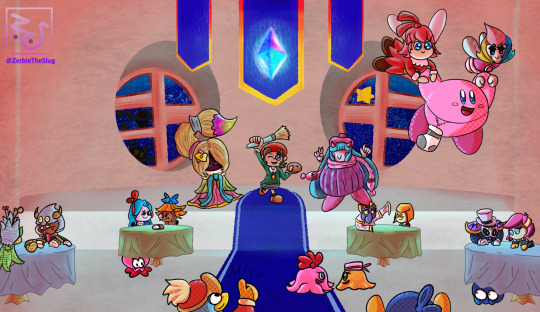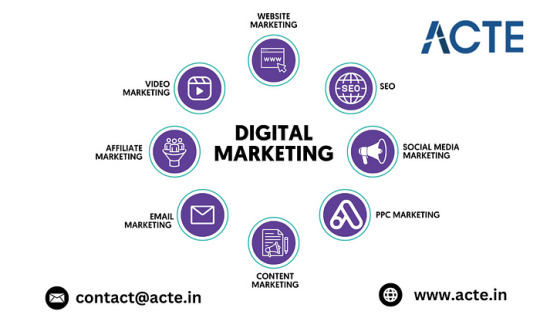#Meta Quest User Experience
Explore tagged Tumblr posts
Text
Meta Horizon Worlds v163:「投票移除」功能更新與修復重點介紹
我們非常想知道您對 Meta Horizon Worlds v163 更新中新功能的看法!您覺得投票移除功能有助於改善社交互動嗎?請在下方留言分享您的想法,我們樂於聽取並回應每一位讀者的見解!
在最新的 v163 版本更新中,Meta Horizon Worlds 帶來了一系列提升使用者體驗的改進。這包括了一個正在測試階段的新功能,讓用戶在錄製影片或拍照時能夠切換名牌標籤的顯示與否。此外,亦新增了世界詳情頁面的內容描述符,以及對「投票移除」功能的更新,增強了用戶的操作便利性和互動體驗。 在一般改進方面,Meta 團隊加速了虛擬世界中畫廊的加載速度,使用者現在可以更快地存取及分享照片和影片。針對名牌標籤的切換功能,該功能目前處於測試階段,只對部分用戶開放。在測試階段的用戶可以在開啟相機時,透過一個新的圖標來切換名牌標籤的顯示與否。值得注意的是,使用無人機相機拍攝時,名牌標籤會自動移除,且無法切換。 Poll to…

View On WordPress
#虛擬實境#虛擬實境遊戲#虛擬實境新聞#META#Meta Horizon Worlds v163#Meta Platform Innovations#Meta Quest#Meta Quest New Features#Quest 2#Quest 3#Virtual Reality Content Guidelines#Virtual World Accessibility#vr#VR Community Management#vr game#vr news#vr news today#VR Social Features#VR user experience improvements#VR Video and Photo Tools
0 notes
Text
Guest Star Allies : Alternate Endings

Disclaimer:
These illustrations (and descriptions) were done back in 2021. A lot of crazy stuff has happened since then, so these are incredibly outdated and kinda bad! However this was a monumental project I've tackled, and I wanted to make these public again (they used to be on DeviantArt). I'm also HEAVILY overdue on migrating my artwork onto here...
WARNING:
Nothing super graphic aside from some mild blood for one ending, but what I want to warn you about is that... well, this is a LOOONG post! If you're brave and patient, then click on "keep reading" to proceed further... have fun!
Dedede (& Bandee) in: Having a Nightmare

Originally created on (December 5, 2021)
Backstory:
Somehow, presumably due to past experiences of possession, the King was able to regain control of himself when he briefly fell influence to the dark hearts. Unlike another timeline, the hero of this story never was blessed with the heart of friendship… With his orange loyal servant, he goes on a quest to find out where these evil hearts come from. On their way, they encounter the Mage Sisters. With a bit of imprisonment, interrogation, and eventual chance of redemption, the duo finds the source of the hearts.
Once at the source, it turns out Hyness had other plans. It's unknown why, but the leader felt greatly inspired to NOT reform the Jamba heart. Rather, he felt an unusual need to revive a fallen wizard, perhaps one that can better accelerate his initial plan. Unfortunately, the king interrupted the ritual and knocked Hyness out… yet the ritual still succeeded, and a nightmare was reborn.
Epilogue:
Meanwhile, back on Popstar, Kirby finally wakes from his lengthy nap. He is unaware of the events that've occurred during his dreams. As for the whereabouts of Meta Knight, while initially requested to join in on the venture, he declined for reasons unknown. As for the fate of the mages, they're doing fine… yet they all feel that something is missing…
Meta knight in: The Greatest Warrior

Originally created on (December 10, 2021)
Backstory:
The Jamba Heart's pieces were scattered across the galaxy, with some individuals falling victim to the dark hearts. MetaKnight, by a miracle, was blessed with the heart of friendship. Now he must go on a quest to find out the cause of this great issue. Although the heart of friendship allows the user to "ally" with foes, the knight rarely utilizes this power, he reserves it for individuals with combat experience. He has attempted to recruit the Mage Sisters after their second battles, but while they gave up on helping Hyness, they refused to come along.
Once at the source, turns out Hyness had other plans. Perhaps the mess was too frustrating to deal with, as he ditched the Jamba Heart plan completely. Instead, he has begun a ritual to summon the strongest warrior of the Galaxy. Although the leader was swiftly taken out, the ritual still succeeded in summoning this warrior. Just as the battle was about to begin, however, a butterfly gently flies into scene. The great knight, seemingly tired of being brought into different dimensions and timelines, swiftly sliced up the insect. However, the remains of the butterfly scattered like embers, which quickly fused into Galacta Knight. With the powers of this insect, the knight has surpassed their title of 'strongest warrior of the galaxy'.
Epilogue:
Kirby has woken from his sleep when the Jamba Heart exploded, however he was one of the unfortunate victims to be cursed with a dark heart. Fortunately, he seems to be the least affected by this curse, unfortunately the heart has made him quite lazy. While the mages initially gave up on helping Hyness, his defeat at the hands of Meta Knight have re-ignited their loyalty. The Knight must watch out, for he has incurred the wrath of the Mage Sisters.
Rick, Kine, & Coo in: Darkness Returns

Originally created on (December 16, 2021)
Backstory:
When the Jamba heart broke, hearts of friendship and darkness scattered across the galaxy. While some have fell victim to dark hearts, others have been blessed with hearts of friendship. A trio of animals were some that have been in contact with such pieces. For reasons unknown, the heart has induced an unusual effect where all the animals have been fused as a single entity, yet they can transform to their individual forms at will. Now, they must go on a quest to find out where these hearts are coming from, and why. Although the Mage Sisters have landed on Popstar, they didn't seem to find many jamba hearts, and so they returned back to the Divine Terminus.
Unbeknownst to them, however, the animal buddies have stowawayed in the shuttle. Once at the source, turns out Hyness had changed his plans. Although the Jamba heart was incomplete, it still had the power to create a being of darkness… or perhaps revive a being of darkness. The Animal Buddies peek behind the scene. With the assistance of the Mage Sisters, the cult conducted a summoning ritual with the incomplete heart. It shatters into pieces, the explosion blows the cult out of the area, leaving only the animal buddies and a matter of pure darkness. It dons its cloak and pulls out its sword, ready to challenge the animal buddies head on.
Epilogue:
Kirby may have been blessed with the heart of friendship and rescued Dedede and Meta Knight, but the effort of saving his friends have taken longer than usual, thus they couldn't reach the mage's shuttle in time. As for the fates of the cult, while they have survived the explosion, they're still continuing their plan of rebuilding the Jamba Heart… perhaps this time with more hearts and better security. Maybe they've missed out some hearts on Pop Star…
Marx in: A Change of Soul

Originally created on (December 18, 2021)
Backstory:
Having survived the Nova's explosion, Marx starts up a new scheme within the planet he once planned to conquer. One day, hearts of friendship and darkness scattered across the galaxy. Curious on the source of these hearts, he goes on a journey to locate it. Somehow, these hearts remind him of a great wish making power, which further motivated him on his journeys. When he encountered the mage sisters, he convinced them to take him to the source of the hearts. Marx being Marx, he quickly betrays the mages, who turn out to be far easier to beat than Kirby.
Once at the source, it turns out Hyness only started to rebuild the Jamba Heart. After defeating this cultist, Marx got really excited on the potential of this incomplete heart. However, this excitement awakened something within him, and quickly all of his negative energy escaped from his body. This negative manifestation of the jester had been called forth by the heart's aura, and plans to continue what Hyness wanted. However, as Marx only has positive energy within him, he opposes his evil self's plan. Sensing defiance within his positive self, the evil clone begins to attack. Now, Marx must battle his own inner demon
Epilogue:
Kirby, Dedede, and Meta Knight someway somehow weren't impacted by the Jamba Heart's explosion. They've resumed their daily lives, and although the Mage's shuttle noisily landed on the planet, the group didn't have enough time to realize the severity of the situation. The Mage Sisters barely survived Marx's betrayal, and with their leader nowhere to be seen, they begin a new plan: revenge. They will never know that Marx has changed for the better, but hopefully the jester goes easy on them…
Gooey in: Revelations

Originally created on (December 19, 2021)
Backstory:
Gooey questions his existence, he wonders where he came from. He knew he came from somewhere, but where? When the Jamba Heart scattered, the aura of the Dark hearts reignited bad memories within him. Could this be the answer? Curious, Gooey goes on a quest to locate the source of all these hearts. Actually, the quest is more of aimlessly flying around until he eventually hits something. He never saved the King or Knight from the dark hearts (Although it took a while until Kirby woke up from his overslept nap for them to be freed), he never met the Mages. The thought of his origin was all that he cared about.
Once at the source, it seems as though Hyness' plans have changed slightly. With the fully rebuilt Jamba heart, he summons a being of pure darkness. Brought back into existence, the being payed the leader kindly… by ending his miserable life. Upon noticing the blue two-eyed blob, the dark entity known as Zero felt intense rage at the sight of this traitor. Now, Gooey will have to fight the very being that created him…
Epilogue (Special):

Originally created on (February 23, 2022)
The Mage Sisters are devastated with the loss of Hyness. Francisca and Flamberge, though, eventually felt a silent sense of relief as they no longer are mistreated by an insane cultist. Zan, unfortunately, didn't take the loss well. She's gotten more psychotic that day, which convinced the other mage sisters to disband from the cult. Their whereabouts are unknown, but hopefully they're having a good time together. As for Zan, let's hope that she too can feel relieved. Regarding Gooey, he has returned to Popstar doing what he does best… living life. Although having remembered his origins, it's starting to get harder to relax. Thankfully, a new friend is there to comfort him.
Adeleine & Ribbon in: Trauma Reborn

Originally created on (December 22, 2021)
Backstory:
Ado was enjoying her time on Ripple Star, when suddenly hearts of darkness landed on the planet. Ribbon and Ado, having remembered their experience with darkness (and Ado having to relive her trauma when fighting the possessed), decided to go back to Popstar and get Kirby. Unfortunately, Kirby was nowhere to be found, and with the arrival of an unusual space craft, the duo had no choice but to do this alone. Their motivation to find the source of hearts only grew once they've encountered the Mage Sisters, who were too loyal to their cause to even be reasoned with. Perhaps it has to do with the fact that they were children, but either way, they sent the Mage Sisters to be locked up in Ripple Star.
Once at the Divine Terminus, turns out Hyness slightly changed his plans. With the fully rebuilt Jamba heart, he summons a being of pure darkness. Its massive wingspan, however, knocked the leader out of the scene. At first, the duo were felt with great dread and fear… but courage and determination quickly overcame that. Now, it's up to a pair of kids to defeat the reborn angel named Zero
Epilogue (Special):

Originally created on (March 30, 2022)
To the relief of everyone, Kirby has been found… in a world of clay. Apparently, he wanted to meet up with old friends that day. When Zero was defeated, a celebration was held on Ripple Star, where Ado, Ribbon, Vividria, and Kirby's Clay friends had a nice discussion with each other. The Mages were released from prison some time later, but Francisca and Flamberge stayed on the planet, seemingly enjoying the place. Amazingly, Hyness surived the fall, although the injury from it seemed to have changed him greatly. He's forgotten his plan, and seemed to be more… sane? He and Zan return to Ripple Star, retiring their evil plans in the process.
Dark Meta Knight in: The Greater Of Evils

Originally Created on (December 30, 2021)
Backstory (The worst IMO):
Dark MetaKnight may have been exiled in a Mirror now shattered by a king, but his rage was just enough to rebuild that mirror. Now free in the regular dimension, the Knight goes on a bloody revenge spree. The explosion of the Jamba Heart didn't seem significant to the knight at first, but seeing how the dark hearts power those it possesses, the knight directs his genocidal path towards the source of the hearts. On his way, he overthrew the king, and finished off his counterpart for good. Kirby never woke up, and the blood knight made sure that he never will.
When the Mage Sisters arrived on Popstar, his use of brutality and psychological torture gave him a major clue as to where these hearts come from. Although the red mage was promised mercy for her "sisters" if she told the knight of the Divine Terminus, the knight quickly broke that promise once they reached the giant spacecraft. With Hyness out of the picture, the knight begins to amplify his killing spree. Unfortunately, his intense negativity manifested into its own entity, which then uses the Jamba heart to create a being of pure darkness… or is it pure light? Either way, now 2 evils must battle it out.
Epilogue (Special):

Originally Created on (March 10, 2022)
For reasons unknown, the red mage was the only mage (or really, only member) to be spared during the Terminus genocide. Drifting away in a crumbling escape pod, she crash lands on a heart shaped planet. Turns out the residents, including survivors from Popstar, are planning a rebellion against this blood knight. Having nothing left to lose, she joins with them, hopefully ending this reign of terror once and for all.
Daroach in: The Rat King

Originally Created on (January 5, 2022)
Backstory:
Daroach had noticed a shower of dark hearts. These hearts reminded him of a rumor, supposedly merging these hearts together will give one great power. Unbeknownst to him, he has also been blessed with the heart of friendship, which grants him immunity to the dark heart's influence. Now, the Squeak Squad go on a quest to collect as many dark hearts as possible. Their encounter with the mages was a great tip off as to where these hearts come from, and how to use them. While the mages were initially given a chance of redemption, they refused… but because of their valuable knowledge to the treasure they seek, for the time being they're held captive.
Once at the Divine Terminus, they effortlessly take care of Hyness… who they also capture for some reason, surely the cult has a worthy bounty. With the Jamba heart at their fingertips, they start devising a plan on what to use it for… unfortunately, the negative energy within the squeak squad quickly were extracted from their bodies. The Jamba heart has disappeared, and in its place, a star-shaped mass of familiar yet disgusting pests
Epilogue:
It seems as though the battle have changed the Squeaks' personalities. They release the cult and provided them treasure as an apology gift. The squad flies out, now embarking on their mission to seemingly undo their wrongs. Now that essentially all the dark hearts have been destroyed, the cult's plan of summoning the dark entity has been scrapped. However, turns out this treasure was a bundle of friendship hearts. The Squeaks prior to the fight believed that the friend hearts were weak in power, but kept them anyways because they surely were worth something.
Unfazed by the positivity of friend hearts, the cult start a new plan: dimensional travel. Sure, THEIR dimension is out of dark hearts, but there are other dimensions just RIPE with them. However, Hyness and the mages were separated when they commenced their dimensional ritual with the friend hearts. These hearts also have been separated within this unusual limbo. For the brief period of time of entering this dimension, the cult was overcome with an extreme rush of negative energy, greatly powering and corrupting them. Meanwhile, Kirby and co arrive to the Divine Terminus to find random wormholes strewn about…
Taranza in: The Last Hope

Originally Created on (January 11, 2022)
Backstory:
Ever since the loss of the person he loved most, Taranza constantly looks for ways to bring her back. Days and nights of research, clues and dead ends. One day, he came across knowledge of a heart, one that would supposedly grant wishes of sorts. What a coincidental finding, because after that, the Jamba heart exploded, scattering dark hearts over PopStar. Further experiments with those collected have shown that these hearts hold some sort of power, and the arrival of the Mage's spacecraft warranted further investigation. Somehow, he convinced the mages that he would help them collect the fallen heart pieces, and along the way confirmed the existence of the Jamba Heart. There must be something about his character, because the Mages seemed to have also been convinced to give up their mission entirely.
Once at the Divine Terminus, turns out Hyness didn't want to use this power for good… so Taranza just webs him up and begins the ritual with the Jamba Heart. The ritual was a success… sort of. Turns out, the heart's influence in its power is determined by the balance of friendship and darkness… and most of the hearts collected were of negative energy. As a result, although he was able to bring back his love, she is just a vessel for pure hate, with no ability to love or care… Will his kindness be enough to bring her back completely?
Epilogue:
Floralia was a giant umbrella for the residents of Pop Star, who never saw any Jamba Hearts land on their world. As a result, the hero of Dreamland never began his journey. When the Mages returned to the Divine Terminus, they only found Hyness, still stuck in the webbing. Taranza and the summoned entity are gone without a trace. Has he succeeded? Has he failed? It's not known, but hopefully he's together again with the one he loves most…
Magolor in: Crowned Sins

Originally Created on (January 14, 2022)
Backstory (2nd worst IMO, also OUTDATED!!!):
Not much is known on the whereabouts of Magolor. He was presumed dead after the fateful battle over an ancient artifact, but perhaps he simply teleported elsewhere. Either way, the dark hearts have lead him to the Divine Terminus. Is he still the traitorous scum that he was, or has he changed his ways? It's hard to tell, especially since he was able to sneak into the site where Hyness failed his ritual. In the room of the supposed Jamba Heart, the leader of the cult is nowhere to be seen. He must've went along with the Mages to find the rest of the pieces. Magolor, being an ancient himself, starts to conduct a ritual. When it was complete, a crown was manifested… unfortunately, the egg could not use this artifact, as the crown gravitated towards the partially depleted Jamba Heart, which melted into a white mass. The crown then takes the form of a familiar shape, and now it's up to Magolor to pay for his sins.
Epilogue:
Without the heart, the cult's mission has failed. However, Hyness had other plans. As he starts his ritual, he calls forth the strongest warrior in the Galaxy. Pop Star miraculously wasn't hit by the rain of hearts when the Jamba Heart exploded. However, this ritual seems to have brought in the attention of a hero of sorts. Their description is vague and inconsistent, the hero may be a hammer weilder, an artistic witch, a chef, anyone really. Either way, they're quickly approaching the Divine Terminus, getting tougher, faster, stronger. Regarding the fate of the blue intruder, once again he seems to have dissapeared. Strangely though, it's been discovered that he's been responsible for the creation of some popular (but now defunct) theme parks prior to the Jamba Heart's explosion. Also, ever since this recent dissapearance, there's been reports of a merchant donning an oddly familiar white and green attire… but it's difficult to confirm if they are related to the blue ancient.
Susie in: Dreams Further Than Stars

Originally Created on (January 20, 2022)
Backstory:
Readings indicated of negative energy suddenly showing up across the galaxy, alongside the epicenter of the event. Seeing this as a liability to her business, Susie starts a program to gather/remove all the Jamba Hearts in the galaxy. She returns to Popstar to recruit her prized knight, who fell influence to the dark heart. Kirby was initially the first to be recruited, but he was unable to be located, even with advanced scanning and everything. When the Mage Sister's space craft landed on Pop Star, Susie struck a deal with them to collect the dark hearts. With scanning on their spacecraft, and further discussion with the Mages, turns out these dark hearts will be used for the Jamba Heart, which supposedly shares wish granting properties like [[redacted]]. The mages have gained such a great amount of respect with Susie that they've started to question their loyalty towards Hyness.
Attempts of negotiating with Hyness regarding the Jamba Heart failed, and the mad cultist retaliated violently, so Susie just shoots him there. With Hyness out of the way, and upgrading the Jamba heart with components related to [[redacted]], Susie starts making her wish… Unfortunately, the heart gained sentience and started to attack. It utilized its surroundings to build a more… suitable form. Whatever wish Susie had, probably won't be possible either way…
Epilogue:
Note: Hyness has been shot with paralysis, which is nonfatal. He has been returned to the mages, and is paid in compensation for that unfortunate event. Mecha Knight, once again, has gone rogue. The incident regarding the Jamba Heart bears great similarity to the incident with [[redacted]]. Note that [[redacted]] has nearly resulted in universal extinction, with its utilization for the heart bringing in such a great amount of negative press that the Haltmann Works Co. has been reduced considerably. Further remnants of [[redacted]] have been destroyed, as to prevent any more incidents involving it to happen. As for the individual named Kirby, he has returned to PopStar. He was last seen with entities donning overalls, green tunics, powered battle armor, and others. Meanwhile, Susie lives in exile on the Star-shaped planet, where she will now do considerable self reflecting.
[FINALE] The Three Mage Sisters in: The Beginnings of Endings

Originally Created on (February 4, 2022)

"Journey For The Dark Hearts". Originally Created on (January 27, 2022)
Backstory:
Hyness' plan with the Jamba Heart failed as the heart shatters across the galaxy. Unbeknownst to the cult, this explosion had a rippling effect throughout the galaxy, perhaps in a way that bends reality and dimension. The mages start their quest of recollecting the pieces, and on their way they encounter some… oddities. Somehow, entities from parallel worlds were being brought into their world, entities of great power. Just as unusual, there were an abnormal amount of jamba cult members in every part of the galaxy, members that seem to be aggressive towards the mages. After gathering the hearts, they return to the ritual site, which is now in shambles. Hyness must've changed his plans while the mages were away, but it's unknown why he would change his mind mid-way through. Unfortunately, he's absent… In his place, seemingly waiting for the mages to arrive, is the messenger of death itself. Will they triumph, or will they fall with Hyness?
Epilogue:
It's unknown how helpers were able to break into the Divine Terminus, or why individuals such as Adeline (a mere child) would even get this far, but what's known is that they're incredibly powerful. It seems as though not only were friend hearts and dark hearts spread around, but also hearts of enhancement. Only in certain timelines were these hearts found, others lacked them completely. It's unknown why the embodiment of death manifests in these alternate timelines, perhaps the heroes of those stories just weren't meant to be, perhaps it was a test to see how this story could go on. Either way, the result stays the same: the hero succeeds, and life moves on. As for the fates of these mages, it seems as though things have returned to normal, back to where it all started in the beginning. However, that Jamba heart not only looks completed, but seems to be more powerful than usual… Could this be the plan of summoning the TRUE destroyer of worlds?
Splitting of timelines are not unusual, because they're so infrequent and minor in difference. In a couple of timelines, a Blue knight saved the world instead of the Pink Hero. In another, a great King set out to overthrow the corrupt Queen in the skies. In these varying times, the villains of the modified story are even more intense than before. However, the Jamba Heart situation was a great exception, with dozens and dozens of branches suddenly appearing after its explosion. Some more drastic than others...
#kirby#art#nintendo#video games#kirby star allies#magolor#meta knight#king dedede#bandana waddle dee#rick kine and coo#susie haltmann#taranza#dark meta knight#adeleine#ribbon kirby#daroach#kirby squeak squad#three mage sisters#marx kirby#gooey kirby#marx soul#nightmare kirby#dark mind#dark matter#zero kirby#void kirby#alternate ending#dark nebula#morpho knight#galacta knight
40 notes
·
View notes
Text
Jay Graber, the C.E.O. of the upstart social-media platform Bluesky, arrived in San Francisco the Sunday after Donald Trump’s reëlection and holed up in a hotel room. She’d spent the previous days road-tripping down the West Coast from her home, in Seattle, stopping at beaches and redwood groves along the way, and in San Francisco she’d hoped to remain half in vacation mode. But now Bluesky was seeing a surge in new users, and it was looking as if she’d need all hands on deck. “There was momentum,” Graber recalled recently, adding, “It was just picking up day by day.”
Since launching, in early 2023, Bluesky had positioned itself as a refuge from X, the site formerly known as Twitter. For nearly two decades, Twitter had been considered the internet’s town square, chaotic and often rancorous but informative and diversely discursive. Then, after the tech billionaire turned Trump backer Elon Musk acquired the platform, in October of 2022, it devolved into a circus of right-wing conspiracy theories. Liberals began fleeing, and Bluesky in turn accumulated more than ten million users by the fall of 2024, making it one of the fastest-growing social networks. But the post-election influx proved to be of a different order, turning Bluesky into what one tech blogger compared to a Macy’s at the start of Black Friday sales.
Graber put in sixteen-hour days overseeing Bluesky’s twenty-person staff, taking calls with prospective investors, and recruiting new hires, leaving her hotel room only to pick up DoorDash deliveries in the lobby. In Seattle, Bluesky’s chief technology officer set up an automatic “failover” so that if one of the company’s servers crashed another would take its place. A team of engineers took shifts to insure that someone was on duty at all hours, battling to keep the overwhelmed servers online—“like firefighting,” as one put it. On November 14th—two days after Trump announced the creation of the Musk-led Department of Government Efficiency—Bluesky staffers stayed late, in a virtual “situation room,” to watch the day’s sign-up ticker hit a million. In a matter of two weeks, Bluesky’s population doubled. Today, it has a user base of more than thirty million.
Disaffected X users gravitate to Bluesky as a throwback to a gentler, saner social-media experience. Being on the site feels like a mixture of Twitter in 2012, when it was a haven for internet nerdery, and in 2017, when it was a seedbed of anti-Trump #Resistance. The Bluesky interface reassuringly resembles Twitter’s, down to the winged blue logo (a butterfly instead of a bird) and the character limit on posts (three hundred rather than early Twitter’s hundred and forty). The platform is theoretically open to all, but some MAGA trolls have reported that their accounts have been blocked. Discourse is solidly left-leaning, and disagreements tend to be internecine. The most followed account belongs to Representative Alexandria Ocasio-Cortez. As if to consummate Bluesky as a successor to the liberal Twitter of yore, Barack Obama recently joined and, in his first post, celebrated the fifteenth anniversary of the Affordable Care Act.
The platform is not yet populated enough to qualify as the internet’s new town square. Even after the Musk-induced exodus, X reports that it has more than five hundred million active users per month; Threads, Meta’s self-fashioned Twitter alternative, has around three hundred million. Yet Bluesky wields outsized influence in the social-media landscape because of the innovative infrastructure on which it’s built. All the giant social networks are what’s known as centralized platforms: most aspects of user experience, from content moderation to algorithmic recommendations, are dictated by the corporation that runs the platform. Bluesky, by contrast, originated as a radical side project within Twitter under its co-founder and former C.E.O., Jack Dorsey, to create a decentralized social-media model. Where X or Facebook runs primarily on proprietary technology, Bluesky is powered by an open-source protocol, a sort of instruction manual and set of data standards that allows anyone to build compatible software on top of it. As a result, users can customize the algorithms and content-moderation rules that govern what appears in their feeds—and, if they don’t like Bluesky, they can take their followers and their archive of posts and build or join another site running on the same protocol. The power that typically lies with corporations is thus redistributed to the users themselves.
With its post-election boom, Bluesky has become by far the largest decentralized social network and Graber (who, citing privacy concerns, gives her age as “around thirty-three”) the most high-profile female head of a social network in an industry known for eccentrically megalomaniacal men. With Trump and Musk in power, Silicon Valley leaders have taken a rightward turn. At Meta, Mark Zuckerberg has cut back on fact checking, abandoned D.E.I. efforts, and said that the corporate world needs more “masculine energy.” Amazon’s Jeff Bezos, who owns the Washington Post, has ordered that the paper’s opinion pages publish only pieces that support “personal liberties and free markets.” Graber, who defines her politics as “anti-authoritarian,” sees Bluesky as a corrective to prevailing social media that subjects users to the whims of billionaires. “Elon, if he wanted to, could just delete the whole X time line—just do these totally arbitrary things,” she said, adding, “I think this self-styled tech-monarch thing is worth questioning. Do we want to live in that world?”
The Seattle area, home to Microsoft’s and Amazon’s headquarters, is perhaps the most significant American tech hub outside the Bay Area. You can’t throw a Starbucks venti there without hitting a software engineer. But Graber told me that she chose the city in part for its separation from Silicon Valley, and for its “moody and majestic” landscape: “Some people said I moved here because I’m a moss maximalist, and they’re not wrong.”
Graber and several Seattle-based employees have desks in a co-working space with views of Puget Sound. One day in January, I met Graber there. Tall and willowy, with a halo of tight dark curls, she wore a hooded black coat from the Chinese brand JNBY which gave her high-cheekboned face a slightly witchy aspect. The workspace was bright and sparse, with motorized standing desks and scattered beanbag chairs. Graber’s station was in a pod of four cluttered with external monitors, Annie’s crackers, and spent coffee cups. Compared with most tech leaders, she has a low-key digital footprint. On her Bluesky account, one representative post features a photo of her arms cradling a hen, captioned “My favorite chicken.”
“Jay” is an adopted moniker. Bluesky was named before Graber became involved, but by coincidence her given name is Lantian—Mandarin for “blue sky.” Graber likes to say that her mother, an émigré from China, chose it to lend her daughter “boundless freedom.” Her mom, who worked as an acupuncturist, and her dad, a math teacher and a former lieutenant colonel, met at a Christian university in Oklahoma. They raised Graber, an only child, in a Baptist community in Tulsa. Growing up, Graber looked forward to Friday nights after church, when she was granted unfettered access to the family’s desktop computer. A formative internet experience was a game called Neopets, in which users raise digital creatures and connect with other players in a shared virtual village. As an adolescent, Graber kept a blog on Xanga, an early social platform, and taught herself rudimentary code so that she could customize her page with music and a zebra theme.
At the time, Graber identified less as a computer kid than as a bookworm, reading stories of scientific and mathematical discovery. “One thing that interested me was how a lot of inventions came through ordinary people trying things,” she said. “It wasn’t just the lone genius.” She read the children’s fantasy series “Redwall” and every “Robin Hood” book in the library; she grew to love such feminist sci-fi authors as Margaret Atwood and Ursula K. Le Guin, who, as Graber put it, excelled at reimagining “how society could look.” To this day, she remains an avowed fantasy devotee.
In one corner of the Bluesky office sat a pile of padded training swords. Graber belongs to a club that re-creates medieval sword-fighting tactics, and the office had recently staged a tournament. She picked up a mock shortsword and extended it expertly in one hand. I grabbed another, plus a small plastic shield, and she led me in an impromptu battle. “A lot of men just rely on brute force to get through things,” she said. “When you learn that, you can still win, with better leverage and technique.” She raised her sword and mimed slashing it down toward my exposed neck.
After high school, Graber enrolled at the University of Pennsylvania, figuring that its combination of liberal-arts, engineering, and business programs would allow her to “maximize optionality.” She chose an interdisciplinary major called Science, Technology, and Society, and as part of her senior thesis designed an online time bank through which students could swap labor—taking photos for another person, say, in exchange for cooking lessons. Graber told me, “In some ways, it was like a social network.” When she graduated, she moved to an all-female coöperative in West Philadelphia and volunteered for local tech-policy projects, which led to a job as an organizer at Free Press, a media-advocacy nonprofit. But the policy world operated “at a high level of abstraction,” she said, and she found it unsatisfying: “Being able to make change directly has always been really appealing to me.” On work trips to San Francisco, meeting with tech activists and hanging out in “hackerspaces,” she was drawn to the tech industry’s nimble immediacy.
In 2015, she enrolled in a coding boot camp in San Francisco, then landed a job at a startup that employed blockchain cryptography to track inventory for corporate clients. But she was restless there, too. According to Graber, her mother had hoped that she would become a doctor, and would tell her, contra the name Lantian, “You have too much freedom. You have to learn how to be more grounded.” In San Francisco, Graber started going by Jay. A blue jay, she reasoned, could navigate both sky and land.
A new crypto opportunity soon arose: a friend’s brother was running a bitcoin-mining operation in a defunct ammunition factory in rural Washington and needed help from someone with technical prowess and an appetite for grunt work. Graber moved to a house near the factory and, between shifts, spent hours studying code on her own. She described this to me as her “cocoon period”: “There were no distractions—no place to go, no parties, no friends.” Even in isolation, Graber displayed a future tech founder’s knack for self-invention. She wore earrings made out of salvaged memory sticks and dyed locks of her hair electric blue and purple. She began lifting weights and, for a brief time, tried an all-meat diet. “I’m pretty experimental,” she said. “I’ll try anything once.”
In mid-2016, Graber went to San Francisco to attend the first annual Decentralized Web Summit, hosted by the open-web organization Internet Archive. There she met Zooko Wilcox-O’Hearn, who was developing a cryptocurrency called Zcash. Wilcox-O’Hearn told me that Graber stood out for the contrast between her “youth and her seriousness,” and for her emotional intelligence. He hired her as a junior engineer, and she eventually rose to oversee developer operations. One early Zcash transaction became something of a legend within the blockchain community: in the memo field, the sender had encrypted a romantic message. Though people didn’t know it at the time, the note was for Graber, from a programmer paramour.
San Francisco was good for networking and dating, but Graber was spending all her money on rent. She founded her own startup, Happening, a kind of social network for event organizing, but it didn’t take off. “I was trying to figure out how to get people to use a social app,” she said. “But starting from zero was really hard.” Then, in December, 2019, she saw a tweet thread from Jack Dorsey about a decentralized social-media project he was launching—Bluesky. Graber told me that she felt a degree of so-called nominative determinism, pulled toward the project because it shared her name. “If fate doesn’t exist, then we must create it,” she said. “You can follow things that seem synchronous.”
On the internet, protocols are a bit like a city’s electrical grid—crucial to its functioning but invisible to most civilians. When you send an e-mail, you are making use of the Simple Mail Transfer Protocol (SMTP). When you visit any website, you are using Hypertext Transfer Protocol (hence the letters at the beginning of every address, HTTP). Because of SMTP, your e-mail account can send messages to any other e-mail account; you don’t have to be a Gmail user to e-mail a Gmail user. Daniel Holmgren, one of Bluesky’s head engineers, likened the company’s protocol—called the Authenticated Transfer, or AT, Protocol—to an “open data lake”: whatever is in the water is public property, and any boat on the lake can dredge it up. Conventional social media, by contrast, is siloed: a Facebook account cannot follow or message a TikTok account. In recent years, Google, Meta, Amazon, and Apple have all been targets of antitrust lawsuits. Protocols are anti-monopolistic by design, allowing stakeholders to build coöperative systems that run side by side. As the founder of Internet Archive, Brewster Kahle, put it in an influential talk in 2015, decentralized technology has the power to “lock the Web open.”
What piqued Dorsey’s interest, though, was a long 2019 essay by Mike Masnick, the founder of the blog Techdirt, titled “Protocols, Not Platforms.” The piece summed up a “crisis” that social-media companies faced with content moderation: caught between complaints that they allowed the spread of hatred and disinformation and complaints that they stifled free speech, they managed to please “almost no one.” The solution, Masnick argued, was to develop social-media protocols, which would allow individuals to design filtering tools based on “their own tolerances for different types of speech.” At the time, Dorsey was facing accusations that Twitter “shadow banned” content from conservatives; he’d been questioned by Congress about the company’s content-moderation practices. If Twitter were on a protocol and the work of content moderation were decentralized, then the company’s leadership would no longer be the target of blame. (Dorsey did not respond to requests for comment.) Several decentralized social networks already existed, among them Mastodon, another Twitter-like platform, but none had broken into the mainstream. Masnick, who today is a Bluesky board member, told me that Dorsey contacted him out of the blue and said, “I’m convinced by your paper. I think we’re going to do it.”
Graber likes to compare Bluesky’s decentralized structure to a hotel. Users are “going off and exploring custom rooms that people built, and maybe there’s another hotel out back.”
Dorsey announced that Twitter would fund the development of a “decentralized standard for social media” which Twitter would eventually adopt. To kick-start the project, his team created a group chat on Matrix, another open protocol for digital communication, and invited select people who expressed interest in joining. Then Twitter’s C.T.O., Parag Agrawal, kept tabs on the group to see who would emerge as its leader. Graber joined and was struck by the rudderlessness of the conversation. New people would pop in, make a few unsupported suggestions, and then drop out. No broader vision seemed to be coalescing. She began collating papers that other group members mentioned and wrote an overview of existing open-source social-media protocols. She told me, “The way that you become a leader is you just add value—you just do things.”
In early 2021, Dorsey and Agrawal started conducting interviews with prospective Bluesky heads. Jeremie Miller, who created the pioneering open-source instant-messaging system Jabber (and later became a Bluesky board member), sat in on the interviews as a consultant. He recalled that Graber easily became his pick. The Twitter heads had preconceptions of what Bluesky should be, he told me: “She didn’t give in to those and just propose the things that they wanted to hear.” Still, the search dragged on for months. In the meantime, Graber accepted a position at Twitter itself, working on blockchain technology. Then, in the summer of 2021, during onboarding, she got a call from Agrawal, offering her the role of Bluesky C.E.O. Put off by the protracted hiring process, Graber said that she’d accept only if Bluesky could exist separately from Twitter. Negotiating independence took another few months, but the decision proved pivotal. That November, after years of pressure from an activist investment firm, Dorsey resigned as C.E.O. and was replaced by Agrawal. Then, in January, Musk began buying up Twitter stock. By that April, he’d become the largest shareholder. Encouraged by a disaffected Dorsey, he offered to buy Twitter outright, for forty-four billion dollars.
Twitter had agreed to compensate Bluesky for constructing a protocol, with twenty-five million dollars over five years. Following a brief period during which Graber paid her first contractor out of her own pocket, Twitter executives made sure that an initial twelve million dollars went through. But Graber knew that, with Twitter’s leadership in limbo, she now had to think beyond Bluesky’s original goal of hosting Twitter. She put out feelers to other companies, including Reddit, about the idea of using Bluesky’s protocol. Then, in August, 2022, noting the dread on Twitter at the possibility of Musk’s takeover, she made another crucial decision: Bluesky would build not only a protocol but a social network to run on it. Doing so would offer a proof of concept, Graber said: “But it was also important in case we’re on our own and need to lean in on Plan B.”
That October, Bluesky débuted a landing page with a sign-up box. Within days, driven by word of mouth on extant social media, it had a wait list of more than a million e-mails. The next week, Musk officially became Twitter’s owner. When Masnick heard the news, he texted Graber some friendly advice: “Work faster.” The Bluesky team reached out to Twitter to ask whether Musk would continue to fund the protocol. Dorsey, who sat on Bluesky’s board, had urged Musk to make Twitter open source, so Graber held out hope that Musk would support the project. But they soon received an e-mail from a “random dude with no Twitter e-mail address,” stating that their contract would be cancelled.
In late 2022, the writer Cory Doctorow coined the term “enshittification” to describe how social-media companies make changes that benefit them but gradually, inevitably degrade user experience. In recent years, Facebook and X have buried news by deprioritizing links to articles. Instagram and Pinterest have flooded feeds with surreally inane A.I.-generated content, making it harder to find posts of interest. Social-media users who voice dismay at such changes are accustomed to feeling as if they are petitioning uncaring gods. Bluesky staff members, by contrast, like to describe users of decentralized technology as “agentic,” a jargony way of saying that they get to choose what they see.
One January day, I met in San Francisco with Rose Wang, Bluesky’s C.O.O., and Emily Liu, its head of special projects, who spoke about the average social-media user in a way that evoked a factory-farmed chicken resisting going free range. With the advent of platforms such as Bluesky, users “don’t have to petition the mods or complain about the algorithm,” Liu said, using a shorthand for moderators. She added, “Hating the mods is an artifact of when mods had all the power.”
Wang, a longtime friend of Graber’s (and the co-founder of a line of snacks made with cricket flour), said, “Success is when users ask us to build tools so that they can go and create whatever experience they want.”
Decentralized social networks can take several forms. The most complex are peer-to-peer systems, in which each individual connects her computer directly to others using her own private server. Perhaps the most prominent example is Urbit, a blockchain-linked platform founded by the neo-reactionary programmer Curtis Yarvin, which has only around sixteen thousand accounts. A more accessible approach, employed by platforms such as Mastodon, which has some ten million registered users, is the federated model, in which some people build servers to host groups of accounts, forming a “federation” of user-hosts. (Last year, looking to break into the so-called fediverse, Meta took its first step into decentralized social media and began integrating some of Threads’ functions with the protocol that Mastodon runs.) On Bluesky, any user can host her own account on a private server or join the server of another user-host. But the vast majority of users choose a default option that lets Bluesky’s servers function as host. As a result, creating an account on Bluesky can be as easy as signing up for Facebook or X.
In the spring of 2023, Bluesky rolled out an invite-only beta version of its app. The first batches of invitations went out to just a thousand people from the wait list each week, but each new user was given invite codes to recruit others, and the population quickly diversified. Wrestlers formed an enthusiastic niche and soon attracted other sports subcultures. Brazilian Taylor Swift fans established a community. Early adopters came disproportionately from the groups most negatively affected by Musk’s right-wing makeover of X—sex workers, trans people, people of color. X users in the media and progressive politics traded invite codes like passengers on a ship hijacked by lunatics, offering spots on the only lifeboat.
When I joined Bluesky, in April of 2023, the scene was underpopulated and raw. Content moderation was minimal. An optional What’s Hot algorithmic feed collected content that was popular across the platform. The posts that qualified had as few as a dozen likes and were, as one user observed, roughly “1/3 nudes, 1/3 technical discussion of federated networks, and 1/3 pet photos.” Posts were dubbed “skeets,” for “sky tweets,” a term that has a double meaning as vulgar slang. Without the possibility of going viral (or attracting much attention, period), users’ only incentive was to entertain their fellow internet addicts. The poet and author Patricia Lockwood, a maestro of tweeting, had departed Twitter after Trump used the platform to incite the January 6th riot. She joined Bluesky in May of 2023 and began skeeting in her signature absurdist style. In one brief prose poem, she narrated tumbling down a hill: “haha—Yes! it will be the job of sisyphus, my sexual partner, to roll me up again.” Lockwood told me that Bluesky felt a bit like “returning to a second childhood,” striving to reclaim a social internet that was fun and freeing.
The early enthusiasm allowed Graber to raise eight million dollars in seed investment that July, providing the team with the runway to keep growing. Then Bluesky’s sign-ups slowed, in part because of competition from Threads, which débuted that month. In February, 2024, Bluesky’s social platform became open to the public, yet it continued to feel like a digital backwater. I checked in sporadically that spring and summer and found little action; periodically, I posted messages into the void such as “btw I’m still on this site.” In August, when X was briefly banned in Brazil for refusing to follow local moderation laws, a wave of Brazilians (among the world’s most internet-savvy people) migrated to Bluesky. But the platform may well have remained as niche as Mastodon, which stalled out after experiencing a bump in popularity when Musk acquired Twitter. One feature that helped make Bluesky a viable X replacement was its “starter packs,” offering user-curated lists of accounts to follow in certain areas of interest, so that new members didn’t have to rebuild their online communities from scratch. Threads soon added the same feature.
When a user logs on to X, two tabs appear at the top of her feed: For You, which shows algorithmically recommended posts, and Following, which shows posts from accounts that you follow. The analogous features on Bluesky differ in significant ways. Where X’s Following feed is crowded with ads and recommendations, Bluesky’s contains only the things that people you follow have posted, in reverse chronological order, as on early Twitter, giving Bluesky users a clearer sense of the conversation happening in real time. A Discover feed, meanwhile, custom-selects posts for each user according to an algorithm designed by the company; one of its advantages over X’s For You is that you don’t have to see Musk himself spouting an endless stream of MAGA propaganda and proudly puerile memes. But the site’s biggest departure from X is its My Feeds tab, which allows users to select additional algorithmic feeds designed by fellow-users. At the Bluesky office, Graber opened her laptop, which bore a large sticker of a vine-wreathed sword, and pulled up a test account, then navigated to the menu of feeds. She clicked on one called Science, moderated by a self-vetted crowd of science professionals, then on one called Fungi Friends, which filled the feed with photos of mushrooms. A Popular with Friends feed shows posts getting engagement from people you follow; Quiet Posters, conversely, brings up messages from accounts you follow that don’t post very often.
Bluesky’s head of trust and safety, Aaron Rodericks, previously worked at Twitter, until Musk dismantled its content-moderation team and eventually forced him out. Rodericks told me that Bluesky performs “a foundational layer” of moderation, with more than a hundred contractors working to remove such things as child-sexual-abuse material and threats of violence. But more fine-grained filtering decisions are made at the individual level. In Settings, users can choose from among hundreds of homespun labelling tools that flag or block certain posts in their feeds. The labels range from the straightforwardly functional (a red check mark for authenticated power users, akin to Twitter’s old blue checks) to the idiosyncratically satirical (a label that identifies landlords, private-school graduates, and associates of Jeffrey Epstein). One of the platform’s most prominent feeds, Blacksky, which draws more than three hundred thousand users a month, offers a tool to identify and block racism and misogynoir. Bluesky as a company can afford to enable free speech because the platform’s smaller, optional communities have the power to police speech however they choose. Blacksky’s founder, Rudy Fraser, told me, “If anyone uses a slur anywhere—in a username, bio, in a post—we can get automatically alerted and take action.” He added, of moderation decisions, “If you’re making everyone happy, you’re maybe not serving a community.”
If there’s a trade-off to nurturing insular online communities, it’s that Bluesky as a whole still lacks the kind of cacophonous urgency that defined Twitter in its heyday. The dominant discourse tends to take place in a tone of cosseted aggrievement. On a typical day, a litany of posts might ask why “nobody is talking about” a given issue—the death toll in Gaza, the threatened defunding of NPR—although people are in fact talking about those very things on the same website. Even when it’s politically diverse, social media too easily creates echo chambers. In time, if Bluesky wants to remain relevant, it will have to evolve beyond its relatively monocultural milieu.
Graber likes to compare Bluesky to a hotel: “We’re trying to create a good time for people who step into the lobby,” she said—though the lobby also contains construction materials, left there as a community resource. Users are “going off and exploring custom rooms that people built, and maybe there’s another hotel out back.” If the system proves successful, there will eventually be many hotels operating on the protocol. In the eyes of some of Bluesky’s original supporters, though, the success of its social network has undermined its decentralized vision; its hotel grew so lively so fast that people didn’t venture off to build their own.
Aaron D. Goldman, a former Twitter engineer who worked for Bluesky in its first year, told me that hosting millions of accounts on Bluesky’s servers is costly and creates pressure for the platform to monetize its user base. “If we’re going to have huge hosting costs, then we need a toll booth somewhere,” he said. Graber has resisted replicating Twitter’s advertising-driven model, and Bluesky’s open-source structure obviates the possibility of licensing the platform’s content to train A.I. programs, as companies such as X and Reddit have done. Bluesky currently has only one revenue stream, from hosting accounts on custom domains, but Graber envisions sustaining the business by eventually charging subscription fees, and by monetizing its marketplace of custom tools—users would pay, say, five dollars a month for Blacksky, and Bluesky would take a cut. Still, Goldman said that Bluesky, even with “the bones of a good decentralized system,” has ended up with “the same incentives that led Jack to make Twitter very commercial.” Goldman helped design Bluesky’s protocol, but he and Graber later came to an impasse; he was let go in late 2022. (Graber ascribed their parting less to ideological differences than to Goldman’s lack of productivity; he was “not shipping like an engineer,” she said, and was “treating this more like a research project.”)
Last May, Dorsey revealed that he’d left his seat on Bluesky’s board. In an interview, he complained that Bluesky was “repeating all the mistakes” that Twitter had made, becoming “a company with V.C.s and a board.” He recommended Nostr, an obscure “censorship-resistant” social protocol to which he had donated five million dollars. Graber told me that Dorsey’s departure actually “freed up” the company somewhat. Some prospective users had grumbled that Bluesky was still the pet project of a billionaire; without Dorsey’s involvement the allegation was moot.
Even on the decentralized internet, founders are not above competing for the primacy of their tools. Mastodon’s founder, Eugen Rochko, told me that last year he and Graber discussed a collaboration that would have allowed their two protocols to interoperate, but each told me that the other seemed more interested in having the rival platform migrate onto their own protocol. Rochko did not see the point in Mastodon using AT Protocol, given that Bluesky already dominates it. “There isn’t really a lot of benefit to running your own app on it,” he said. “There would just be no place.” If the decentralized-social-media vision is realized, a single protocol might, like SMTP for e-mail, one day host an entire mainstream social internet: the next generation of Facebooks, Instagrams, and TikToks.
In January, Mallory Knodel, the executive director of the nonprofit Social Web Foundation, co-founded an initiative, Free Our Feeds, to foster the construction of more social networks on Bluesky’s protocol. The goal, as Knodel put it to me, was to “take them up on their offer to make it a truly decentralized platform.” Perhaps there will soon be a proliferation of other popular social apps operating alongside Bluesky. In the meantime, there are signs of growth. Flashes, an Instagram-like site that launched in February, has so far been downloaded more than a hundred thousand times. My favorite project besides Bluesky is a tiny site called PinkSea, a version of Japanese oekaki, bulletin boards for sharing digital drawings. I can log on to PinkSea using my Bluesky account information and post what I draw on both platforms simultaneously. In the Bluesky office, I pulled up PinkSea on Graber’s laptop, and she said that she had never seen it before. It is not a digital town square; with perhaps a few hundred active users, it’s barely even a digital dive bar. But its existence suggests the possibility of other creative projects on the protocol to come. Graber scrolled through the feed, which showcased both sophisticated anime figures and crude doodles, and her eyes lit up. “What excites me is new worlds emerging that I can’t imagine,” she said.
As the sun began to set, we walked from the Bluesky office to a pub. Graber, who doesn’t drink, settled into a dark nook and ordered a non-alcoholic Guinness. As Bluesky has become more mainstream, Graber has asserted herself more pointedly as a nemesis of social media’s Old Guard. For an appearance at South by Southwest in March, she wore a custom T-shirt that parodied one of Zuckerberg’s own design. Where his is emblazoned with the phrase “aut Zuck aut nihil,” a riff on the Latin “either a Caesar or nothing,” hers read “mundus sine caesaribus”—“a world without Caesars.” (The company started selling the shirts for forty dollars apiece and made more money in a day than it had in two years of selling domains.) In Bluesky’s founding documents, taking a lesson from Twitter’s history, Graber introduced a slogan: “The company is a future adversary.” In other words, they must design their platform today in such a way that, even if new leadership eventually jettisons their guiding principles, the thing they’ve created will remain impossible to abuse.
Graber seemed almost to welcome the idea that Bluesky’s legion of thirty million-plus users could someday disband; if people migrated elsewhere on the protocol tomorrow, it would only prove the viability of her vision. “Every centralized system faces the problem of succession, because leadership changes, and you eventually get someone not smart or not good,” she said. “Then users can vote with their feet, because they have their relationships and their data and their identity. Somebody else can come along and say, ‘Hey, I’m doing it better. Come over here.’ ”
#fun fact: I got rejected for a job with bluesky with a denial email that was so stereotypical progressive org ops#in combining HR and touchy-feely#that I both was kinda glad and also somehow more offended than if they had been more blunt/direct
5 notes
·
View notes
Text
Spacetop G1, World’s first Laptop that uses AR Glasses instead of a Display

A laptop that employs augmented reality glasses as a display was called the Spacetop G1 system, and it was shown to a thousand productivity pioneers by the tech firm Sightful last year.
The upgraded Gen 1 device removes the requirement for the user to stoop over a tiny screen when working remotely on a laptop by placing a 100-inch virtual display directly in their eyes.
In this blog, The TechRobot will showcase the World’s first AR laptop: Spacetop G1. So let us begin.
What is Spacetop G1?
Sightful’s Screenless Laptop, the Spacetop G1, combines a computer with comfortable, lightweight augmented reality glasses. Running on the device is SpaceOS, a spatial operating system with an emphasis on online operations intended for productivity.
The weight of the AR glasses is 85 grams, but the Vision Pro, depending on the Light Seal, weighs between 600 and 650 grams. The keyboard is bulkier compared to a MacBook Air or iPad Pro, measuring less than 12 inches in width and weighing three pounds.
Cost of AR Laptop
The Screenless Laptop, Spacetop G1 charges $1,700 and is just a keyboard with spectacles attached.
Spacetop G1 Specs
Spacetop G1, features a Qualcomm Snapdragon QCS8550 CPU, Kryo GPU, Adreno 740 AI, dual eNPU V3, 48 INT8, 12 FP16 TOPs, 16 GB LPDDR5, 128 GB UFS3.1 storage, and 8-hour battery life.
They have two OLED display screens, a 50° field of vision, a 90Hz refresh rate, and very crisp text rendering.
The glasses enable Wi-Fi, Bluetooth, 5G, and a 5MP camera. They also contain a microphone for use in online meetings.
Benefits of AR Laptops
1. Endless View
With Spacetop’s Virtual Desktop, you may get amusement and information without having to navigate around, making it a convenient substitute for real screen space. Although it’s not the only solution with this functionality, this one could be the easiest to use.
A standard keyboard and touchpad, Spacetop’s AR glasses, and a perhaps lower price tag might allow customers to enjoy endless screen areas without sacrificing functionality. For individuals who would rather have a more ordered workstation, this would be a time-saving alternative.
2. Absolute privacy
Multi-monitor laptop attachments should not be used in public areas due to the increased danger of uninvited eyes peeping at private information caused by an excessive number of physical displays. Although privacy screens are available on certain computers and monitors, they are limited to one monitor.
To solve this, Spacetop is a Screenless Laptop, letting the user see their screen alone until it is shared with others. But it also means that those standing close to the user can’t see the screen without their glasses.
3. Improved posture
Laptops’ screens are firmly attached to the keyboard, making them portable yet uncomfortable. Some people find relief from this neck pain by attaching a desktop monitor.
The screenless laptop, Spacetop, provides a more comfortable height and does away with the need for arms or ergonomic monitor supports. Due to this, laptops are a better choice for use at home or in the workplace.
4. Laser Focus
Spacetop G1 is an Augmented Reality (AR) device that reduces visual distractions so users can work productively and enjoy their free time. The apps it may utilize, including Windows or macOS-based software and limited gaming, are restricted by its Android-based operating system and mobile hardware.
Notwithstanding these drawbacks, Spacetop provides a more practical experience than a typical computer since it places all of the necessary components in front of and surrounding users. Instead of letting others decide for them, users may choose whether to allow virtual distractions to affect them.
Highlight – Introducing Travel Mode For Meta Quest Headsets
Best AR Glasses for Laptops
1. Apple AR Glasses
Apple plans to develop AR glasses that look like conventional spectacles with a built-in display. A prototype of the glasses has a thick, attractive frame and resembles high-end luxury sunglasses. With references to Project Starboard and reports of a glassOS, the prototype is anticipated to function on iOS 14.
Though it could take a few more years for a public release, rumors indicate that Apple has already started the second phase of development. The glasses will have the ability to add prescription lenses, gesture-controlled instructions that connect with the Apple Watch, and a true vision display on both lenses.
Possible capabilities include the ability to use virtual things in real-world settings, do activities without using a phone, and enable immersive phone conversations and remote collaboration software.
2. Meta Glasses
Rebranding Facebook to Meta, Mark Zuckerberg is concentrating on augmented reality glasses and headsets. The business plans to deliver Meta spectacles, a prototype of their augmented reality spectacles, in late 2024. The Project Nazare and Project Aria prototypes provide a fully functional augmented reality experience, with 3D visuals and an elegant design. It is anticipated that the Meta Glasses will include an immersive experience with radio, speakers, and cameras, a holographic display with built-in projectors, batteries, and sensors, and a broad field of vision. In 2024, the prototype is anticipated to be released.
3. Xreal Air 2 Ultra
The Air 2 Ultra glasses from Xreal are an improvement over the Air 2 model and are aimed at competing with Apple’s Vision Pro and Meta’s Quest 3 headsets. Complete positional tracking, a form factor akin to eyeglasses, and compatibility for immersive AR apps, TV viewing, and flat-screen gaming are all features of the Air 2 Ultra.
It has a 52-degree field of vision, 500 nits of brightness, two cameras for environmental mapping, hand tracking, and compatibility with Xreal’s Nebula AR environment.
Is AR safe for your eyes?
Prolonged use of AR might result in headaches, nausea, and straining of the eyes. This is a result of our eyes continually focusing on objects at different distances when using AR. This can cause pain and eye tiredness.
Conclusion
The future of laptops with AR like the Spacetop G1 marks a breakthrough in laptop technology by utilizing augmented reality to provide a 100-inch virtual display that improves user posture, productivity, and privacy.
The Spacetop G1 presents a new option for remote work by addressing typical ergonomic concerns associated with standard laptops by mixing AR glasses with a powerful computing machine and the SpaceOS operating system.
Despite several drawbacks associated with its Android-based operating system and the possibility of eye discomfort after extended usage, the Spacetop G1 breaks new ground in augmented reality technology by offering consumers a more useful and engaging experience.
#spacetop1#ar#vr#ar glasses#laptop#virtual reality#augmented reality#mark zuckerberg#elon musk#meta ai#facebook
6 notes
·
View notes
Text
How Meta (Facebook) is Building Its Metaverse Infrastructure
Introduction
When Mark Zuckerberg announced Facebook's rebrand to Meta in late 2021, he wasn't just changing a company name he was signaling a massive shift in digital infrastructure investment. The tech giant's ambitious vision for the metaverse represents one of the largest infrastructure projects in tech history, requiring revolutionary advancements in hardware, networking, and computing power. Let's explore how Meta is creating the foundation for its virtual universe and what it means for the future of digital interaction.

The Backbone: Computing Power and Data Centers
Meta's metaverse dreams begin with raw computing muscle. The company has dramatically expanded its data center footprint, investing billions in specialized facilities designed specifically for the computational demands of immersive 3D worlds.
Unlike traditional web services, metaverse environments require real-time rendering, physics simulations, and support for thousands of simultaneous users—all while maintaining low latency. To meet these demands, Meta has been upgrading its data centers with specialized AI processors and graphics hardware optimized for spatial computing.
The company recently unveiled its AI Research SuperCluster (RSC), which it claims is among the world's fastest AI supercomputers. This computing powerhouse isn't just for current AI tasks—it's being positioned as critical infrastructure for metaverse development, capable of training the massive models that will power everything from realistic avatars to intelligent virtual assistants.
Solving the Latency Challenge: Edge Computing and Network Infrastructure
For the metaverse to feel real, interactions must be nearly instantaneous. Even small delays between user actions and visual feedback can break immersion and cause physical discomfort. This creates a massive technical challenge that Meta is addressing through strategic investments in edge computing and network architecture.
The company has been quietly building out edge computing nodes closer to users, reducing the physical distance data must travel. Additionally, Meta has invested in subsea cable projects like 2Africa and Echo, expanding global internet backbone capacity to support the massive data transfers the metaverse will require.
Perhaps most interesting is Meta's work on "Project Aria," which explores how distributed computing between devices and the cloud can reduce latency. By splitting computational tasks—performing some calculations on headsets while offloading more intensive processes to nearby servers—Meta aims to deliver responsive experiences even with limited on-device processing power.
Creating the Interface: Hardware Development
While software and servers form the metaverse's foundation, hardware is where users will actually experience it. Meta's acquisition of Oculus in 2014 (for $2 billion) now seems prescient, giving the company a significant head start in VR hardware development.
The Quest headset line has evolved to become increasingly powerful while remaining affordable and wireless—crucial factors for mass adoption. But Meta's hardware ambitions extend far beyond current VR headsets. The company's Reality Labs division is working on multiple next-generation interfaces:
Lightweight AR glasses that overlay digital information on the physical world
Haptic gloves that let users "feel" virtual objects
Neural interfaces that can detect subtle muscle movements for more natural control
Spatial audio systems that create convincing 3D soundscapes
Project Cambria (now released as the Quest Pro) represented Meta's push toward higher-end mixed reality, incorporating eye tracking, face tracking, and improved passthrough technology—all essential components for creating presence in virtual environments.
Building the Digital Foundation: Software Infrastructure
Underpinning Meta's metaverse is a complex software ecosystem designed to handle everything from avatar creation to virtual economies. The company has developed several key platform components:
Horizon Worlds serves as Meta's social VR platform where users can create and explore virtual spaces. While still developing, it represents the company's vision of user-generated content driving metaverse growth.
Presence Platform provides developers with tools to blend virtual and physical reality, including scene understanding, spatial anchors, and interaction SDKs.
Avatar system allows persistent digital identities across Meta's apps, with increasingly realistic appearances and expressions.
Meta has also been acquiring companies with specialized metaverse technology, such as Within (VR fitness), Supernatural (VR fitness), and BigBox VR (social VR gaming)—integrating their innovations into the broader infrastructure.
The Interoperability Challenge
Despite investing billions in proprietary technology, Meta has publicly committed to metaverse interoperability—the idea that virtual worlds should connect rather than exist as isolated islands. The company joined the Metaverse Standards Forum alongside competitors like Microsoft, helping establish protocols for identity, payments, and virtual assets.
This approach recognizes a crucial reality: no single company can build the entire metaverse alone. By establishing open standards while maintaining ownership of key infrastructure components, Meta aims to influence the metaverse's direction while ensuring its central role in its development.
Ethical Infrastructure and Trust & Safety
Building metaverse infrastructure isn't just about technology—it's also about creating systems to ensure safety, privacy, and responsible use. Meta has established a $50 million XR Programs and Research Fund partly focused on developing ethical guidelines and safety features.
The company is developing tools like personal boundaries to prevent harassment in virtual spaces and content moderation systems designed specifically for 3D environments. These "trust and safety" elements represent critical but often overlooked infrastructure components.
The Economic Foundation: Payments and Commerce
A self-sustaining metaverse requires robust economic systems. Meta has been building financial infrastructure through several initiatives:
Horizon Marketplace enables creators to sell virtual items
Meta Pay (formerly Facebook Pay) provides payment processing
Digital collectible support allows for NFT displays on Instagram and Facebook
While Meta's cryptocurrency efforts (formerly Libra/Diem) faced regulatory challenges and ultimately shut down, the company continues exploring digital payment solutions that could power metaverse economies.
Conclusion
Meta's metaverse infrastructure represents one of the most ambitious digital projects in history, spanning hardware, networking, computing, and platform development. While significant technical, ethical, and business challenges remain, the company has demonstrated its commitment through unprecedented investment—reportedly over $10 billion annually.
The success of this massive infrastructure project remains uncertain. Questions about user adoption, regulatory oversight, and competition from other tech giants loom large. However, what's clear is that Meta isn't just talking about the metaverse—it's building the foundations it believes will support the next generation of digital experiences.
Whether Meta's vision of the metaverse becomes reality or evolves into something different, the infrastructure investments being made today will likely shape digital interaction for decades to come.
#mobile game development#gaming#multiplayer games#nft#metaverse#game#vr games#blockchain#unity game development
1 note
·
View note
Text

Achromatic diffractive liquid-crystal optics for virtual reality displays
As a promising candidate for the next-generation mobile platform, mixed reality (MR) such as Apple Vision Pro and Meta Quest Pro (both are passthrough virtual reality headsets) has the potential to revolutionize the way we perceive and interact with various digital information. By providing more direct interactions with digital information, MR is one of the key enablers for metaverse, spatial computing, and digital twins that have found widespread applications in smart tourism, smart health care, smart manufacturing, and smart construction, just to name a few. To further enhance the human factors and ergonomics of MR displays, it is essential to improve the overall user experience, particularly for long-term wearing comfort. To achieve this goal, an ultracompact formfactor and a lightweight device are key goals. In a new paper published in Light: Science & Applications, a team of scientists, led by Professor Shin-Tson Wu from College of Optics and Photonics, University of Central Florida, U.S., and co-workers, have demonstrated an achromatic diffractive liquid-crystal (LC) optics system with an ultrathin formfactor and light weight.
Read more.
7 notes
·
View notes
Text
SEO Plain and Simple 🌞
🎶 SEO Symphony - Elevate Your Digital Presence! ✨
1/ Ever wondered how Google knows exactly what you're looking for? It's not mind-reading, it's SEO! 🕵️♂️ Search Engine Optimization is like the digital wizardry that ensures your content shines like a beacon in the vast online ocean. Let's dive into the SEO wonderland! 🌐✨
2/ 🧠 Fun Fact: SEO isn't just about keywords; it's a strategic dance of algorithms! Google's bots are like super-smart detectives crawling through the web, indexing pages, and ranking them based on relevance. It's a quest for the most accurate search results! 🕵️♀️📊
3/ Meta Tags are the unsung heroes of SEO. Think of them as your content's backstage pass. 🎤 Crafting catchy titles and meta descriptions isn't just for show; it's the key to grabbing attention in the search results! 🌟✍️
4/ 🔄 The SEO game is a dynamic tango. Regularly updating your content tells search engines that you're the cool kid on the block. Fresh, relevant content is like a VIP pass to higher rankings! 🚀📅
5/ Backlinks are the OG influencers of SEO. Imagine each link as a vote of confidence for your content. 🗳️ Quality over quantity is the mantra here. The more reputable sites vouch for you, the higher you climb in the SEO hierarchy! 📈🏆
6/ Page Speed is the also important for user experience and SEO. Slow-loading pages are like a suspense movie with a never-ending plot twist – frustrating! ⏳⚡ Optimize your speed, and you'll make users happy to browse your website! 🌞
7/ Mobile-First Indexing is the superhero transformation of SEO. With mobile usage soaring, Google prioritizes mobile-friendly sites. 🦸♂️📱 If your site isn't mobile-ready, you're missing out on a heroic opportunity!
Unlock the SEO secrets and skyrocket your digital presence! 🚀 Dive into our step-by-step guide to SEO success! Your journey to the top starts here:
#seo #seomarketing #seosecrets #seoguide #seotips #seotactics #seotutorial #seocourse #seotraining #seostrategy #seomarketing #onpageseo #offpageseo #backlinks #freetraffic #organictraffic #websitetraffic #boostyourtraffic #searchengineoptimization #onpageoptimization #offpageoptimization #affiliatemarketing #digitalmarketing #internetmarketing #makemoneyonline #earnmoneyonline #onlinemarketing #onlinebusiness #homebusiness #workfromhome #passiveincome #digitalmarketer
#work from home#affiliate marketing#make money online#home business#make money with affiliate marketing#online marketing#digital marketing#online business#marketing#blogger#on page seo#seo tutorial#seo marketing#seo tips#seo services#seo#digitalmarketing#socialmediamarketing#searchengineoptimization#on page optimization#offpageseo#official#off page optimization#off page seo#technical seo#backlinks
5 notes
·
View notes
Text
Integration of AI and Blockchain: All You Need to Know

The convergence of AI and the metaverse
Interestingly, this convergence has its roots in the same hardware that powers it. GPUs, known for rendering rich virtual spaces, are the same workhorses that train AI models. Their parallel computing capabilities not only make them invaluable in AI development, but also in bringing the complex environments of the Metaverse to life. This synergy is evident in the rising value of GPU manufacturers like Nvidia, highlighting the intertwined growth of artificial intelligence and virtual reality technologies.
Looking ahead to 2024, the convergence of AI and the metaverse is shaping up to be a fundamental advance in our technological journey. We are about to witness how AI transforms the act of creation within the metaverse. This year, we predict that AI will evolve beyond its current capabilities, allowing creators to create expansive virtual worlds simply through the power of description. The metaverse will no longer require complex skills in 3D modeling and animation; instead, it will respond to the creative impulses of Human thought, which AI brings to life.
The trust architecture of tomorrow
The year 2023 was a crucible for blockchain, with the industry going through legal challenges and corporate upheavals. These tests, reminiscent of the growing pains of any technological breakthrough, heralded the maturation of blockchain. Amid this legal maelstrom, the essence of blockchain – the digitization of asset ownership – remained resolute and unscathed, continuing its march towards the technological revolution.
We envision blockchain merging into the fabric of the Internet, similar to the invisible but vital protocols that power our emails and instant messages. This convergence will make blockchain assets become a native dialect of the digital realm, essential and, most importantly, invisible to the user. Interacting with blockchain will be as simple as sending an email, with its hidden complexities and omnipresent efficiency and security. In this future, blockchain development services is not just a technology; it is a silent orchestrator of digital trust and ownership.
Synergies between virtual reality and the metaverse
In 2023, virtual reality (VR) has risen to become the next frontier in human-computer interaction, providing unprecedented bandwidth for digital communication and embodying the essence of presence. This leap forward has been driven by advances from major hardware manufacturers, with the launch of Meta Quest 3 and the long-awaited VR headsets from Apple and Nintendo. Every step in this area is not just about technological progress; It is about redefining our own perception and interaction with digital spheres.
Looking ahead to 2024, we are on the brink of a watershed moment in the spatial computing industry. The potential use case of experiencing events like the NBA Finals from the best seats in the stadium, all from the comfort of home, is set to capture the imagination of the masses. This experience, bridging the physical and digital worlds, will likely be a catalyst for widespread adoption among the early majority. The road ahead for virtual reality is long and full of potential, but the convergence of technologies such as artificial intelligence, blockchain and advanced hardware is setting the stage for a seismic shift.
The cultural and economic impact
In the narrative of our digital evolution, Generation Z emerges as the vanguard of a new cultural epoch. Born in a world where virtuality is as real as the air they breathe, these digital natives are the first to fully immerse themselves in the fruits of technological convergence. His initial, playful and experimental forays into the creation of memes and digital artifacts are nothing more than the prologue to a deeper and more significant change. With AI-powered tools and the metaverse at your fingertips, they don't just use technology; They are reshaping it, subjecting the digital universe to their imagination and whims.
We see these young minds not only embrace but master the art of creation within these new realms. They are the pioneers of a world where user-generated content is not just a hobby but a new economic frontier. In their hands, creativity and innovation become more than expression; They are the keys to unlocking new forms of value and influence. The power once held by a select few over coding and legal complexities is now democratized in the hands of these young creators, heralding a future where the digital realm is limited only by the imagination.
In 2024
As the year 2024 progresses, we find ourselves on the cusp of a transformative era in technology. The integration of AI, blockchain and virtual reality is creating a new digital landscape. This convergence is more than a mere fusion of technologies; It is a revolution in the way we interact with the digital realm. The advancement of AI is redefining creative possibilities in the metaverse, allowing environments to be shaped solely by thought. Blockchain evolves into a fundamental layer of digital trust, making asset ownership part of the fabric of the Internet. Virtual reality, on the brink of a breakthrough, will radically change our sensory experiences in digital spaces.
Fundamentally, this technological synergy is the playing field of Generation Z, who are not only users but active creators and modelers of these areas. Their commitment to these technologies is not just about leisure; It is the forging of a new economic and cultural landscape where imagination is the main currency.
#blockchain#blockchain development#blockchain development company#blockchain development service#blockchain technology
3 notes
·
View notes
Text
The Best iPad Cases for Kids: A Comprehensive Guide
SEO Meta Description:
Discover the top picks for The Best iPad Cases for Kids in 2023. Our expert guide provides detailed insights, reviews, and FAQs to help you make the right choice for your child's device. Explore these recommendations and shop now at WristWatchStraps.co for the latest in kid-friendly iPad cases.
Introduction
In the digital era, iPads have become indispensable tools for children's education and entertainment. Safeguarding these devices is crucial, making the quest for the best iPad cases for kids a top priority. This comprehensive guide not only offers valuable insights but also provides a seamless shopping experience. Explore our recommendations and shop now at WristWatchStraps.co for the latest in kid-friendly iPad cases.
Factors to Consider When Choosing The Best iPad Cases for Kids
Material Matters: Durable Protection for Playful Hands
Selecting a case made from robust materials is essential. Shop now at WristWatchStraps.co for silicone or rubber cases that provide a sturdy grip, preventing accidental slips and drops. Our reviews cover the best materials that withstand the wear and tear of an active child.
Design Delights: Merging Style with Functionality
Kids love vibrant designs, and luckily, many iPad cases offer both style and functionality. Explore our recommendations and shop now at WristWatchStraps.co for cases featuring beloved characters, ergonomic designs, and functionality that enhances the overall user experience.
Size Sensibility: Finding the Perfect Fit
Not all iPad cases are one-size-fits-all. Our guide helps you navigate through various sizes and compatibility features to ensure your chosen case fits your child's iPad model like a glove. Discover the perfect fit – shop now at WristWatchStraps.co.
The Best iPad Cases for Kids in 2023
1. Fun and Functional: XYZ Cartoon Series Case
Delight your child with this eye-catching case featuring their favorite cartoon characters. The reinforced corners and shock-absorbent material make it a top choice for parents concerned about accidental drops.
Why We Love It
Vivid Design: Captivating visuals engage young minds.
Impact Resistance: Protects against bumps and falls.
Easy Access: Precise cutouts for hassle-free charging and headphone jack access.
2. Secure in Style: ABC Educational Explorer Case
Combining education and entertainment, this case offers a blend of vibrant aesthetics and educational elements. Dive into our review to discover why it's a popular choice among parents.
Top Features
Interactive Features: Built-in educational games for learning.
Kid-Friendly Design: Lightweight and easy for small hands to hold.
Parental Controls: Manage screen time effectively.
FAQs - Your Burning Questions Answered
How do I clean my child's iPad case? Regularly clean the case with a damp cloth and mild soap. Avoid harsh chemicals to prevent damage to the case material.
Can my child charge the iPad without removing the case? Yes, most kid-friendly cases provide precise cutouts for charging, eliminating the need for removal.
Are these cases compatible with different iPad models? Our recommendations cover a range of iPad models. Ensure to check the product details for compatibility with your specific device.
What makes a case "kid-friendly"? Kid-friendly cases prioritize durability, easy grip, and additional features like kickstands or educational elements.
Are these cases tested for safety standards? Yes, all the recommended cases meet safety standards and are free from harmful materials.
Can I trust online reviews for iPad cases? While online reviews offer insights, cross-reference with reputable sources and user feedback for a more accurate assessment.
Conclusion



Choosing the best iPad case for your child involves a balance of durability, design, and functionality. Our guide aims to simplify this process, providing you with the information needed to make an informed decision. Invest in the right case today to ensure your child's iPad stays protected during every adventure. Ready to make a purchase? Shop now at WristWatchStraps.co.
Contact Us Connect with us on social media:
Instagram: [https://www.instagram.com/wristwatchstraps.co/]
Facebook: [https://m.facebook.com/p/Wristwatchstrapsco/]
YouTube: [https://www.youtube.com/@wristwatchstrapsco]
TikTok: [https://www.tiktok.com/@wristwatchstraps]
For inquiries and assistance, feel free to reach out to us through the provided links. Your journey to the perfect Apple Watch band starts with WristWatchStraps.co.
2 notes
·
View notes
Text

How to rank a website with SEO?
Ranking a website with SEO (Search Engine Optimization) involves a series of strategies and tactics to meliorate your website's visibility in quest machine results runners( SERPs). While SEO is a complex and ongoing process, also is a general overview of the pivotal way to help you get started
Keyword Research
Identify applicable keywords and expressions that your target cult is likely to search for. Use tools like Google Keyword Planner, SEMrush, or Ahrefs to find keywords with high quest volume and low competition.
On- runner Optimization
Optimize your website's content for the chosen keywords. This includes placing keywords strategically in your titles, captions, meta descriptions, and throughout your content.
Ensure your website's content is high- quality, educational, and engaging. Longer- form content constantly performs better in quest results.
Technical SEO
Ensure your website is technically sound by addressing issues analogous as point speed, mobile- benevolence, and crawlability.
produce an XML sitemap and submit it to search machines like Google to help them understand your point's structure.
Link structure
Make high- quality, applicable backlinks from authoritative websites in your niche. Backlinks are a significant ranking factor for quest machines.
Avoid low- quality and spammy backlinks, as they can harm your website's ranking.
User Experience( UX)
Make sure your website is easy to navigate, loads snappily, and is mobile-friendly. user experience is increasingly important for SEO.
produce a clear and intuitive point structure with logical navigation.
Content Creation
Regularly contemporize your website with fresh, applicable, and precious content. Blog posts, papers, vids, and infographics can help attract and engage your cult.
Like
Comment
Share
#seo services#seoservice#search engine optimization#search engine marketing#seo specialist#digitalmarketing#seo#seo expert
3 notes
·
View notes
Text
Winning Strategies for Digital Marketing: a Step-by-step Guide for Beginners and Experts

In the modern age, digital marketing reigns supreme as the linchpin of effective marketing. Businesses today must navigate the expansive online landscape to reach their desired audience, establish brand recognition, and drive conversions. In this article, we’ll delve into the most effective methods for conquering the realm of digital marketing and achieving extraordinary success.
1. Search Engine Optimization (SEO)
SEO serves as the cornerstone of any triumphant digital marketing endeavour. It encompasses the art of optimizing your website to secure higher rankings in search engine results, thus simplifying the process of attracting potential customers. To excel in SEO:
Keyword Exploration: Unearth relevant keywords that resonate with your target audience.
High-Quality Content Creation: Craft informative, engaging content that satiates user intent.
On-Page SEO Refinement: Enhance meta tags, headings, and website architecture.
Mobile Optimization: Ensure your website is mobile-responsive to guarantee a seamless user experience.
2. Content Marketing
Content reigns supreme in the digital realm. Formulating compelling, informative content empowers you to engage with your audience, cultivate authority within your niche, and stimulate organic traffic. Effectual content marketing involves:
Blogging Brilliance: Regularly publish informative blog posts.
Video Mastery: Create captivating video content.
Infographics Impact: Visual content often garners substantial shares.
eBooks and Guides: Provide valuable resources to your audience.
3. Social Media Marketing
Social media platforms thrive as bustling hubs of activity, rendering them ideal for reaching out to and engaging with your audience. Leveraging social media effectively entails:
Platform Picking: Concentrate your efforts on platforms most pertinent to your audience.
Consistent Cadence: Uphold a regular posting schedule.
Audience Interaction: Respond promptly to comments and messages.
Paid Promotion: Ponder running targeted advertisements for greater reach.
4. Email Marketing
Email marketing persists as a potent tool for nurturing leads and retaining customers. To excel in this realm:
Segmentation Savvy: Dispatch targeted content to distinct segments.
Personalization Prowess: Tailor emails to individual recipients.
Automation Advancements: Utilize automation to dispatch relevant messages at the opportune moment.
A/B Testing: Experiment with subject lines, content, and dispatch times.

5. Pay-Per-Click (PPC) Advertising
PPC advertising, exemplified by Google Ads, empowers you to bid on keywords and showcase advertisements in search engine results and on websites. Flourishing in PPC involves:
Keyword Quest: Identify high-performing keywords.
Compelling Ad Copywriting: Craft enticing ad copy to allure clicks.
Landing Page Enhancement: Ensure that your landing pages align with the ad content.
Budget Management: Scrutinize and tweak your ad expenditure to maximize return on investment.
6. Influencer Marketing
Harness the potential of influencers in your field to amplify your reach and enhance your credibility. Contemplate the following:
Influencer Identification: Collaborate with influencers whose audience aligns with your target demographic.
Authentic Alliances: Encourage influencers to generate authentic, relatable content.
Explicit Guidelines: Ensure influencers grasp your brand’s values and messaging.
7. Analytics and Data Insights
Data serves as your guiding compass in the realm of digital marketing. Employ tools such as Google Analytics to:
Monitor Website Traffic: Gain insights into the origins and behaviors of your visitors.
Conversion Scrutiny: Measure the triumph of your marketing campaigns.
Audience Revelation: Attain a deeper understanding of your audience’s demographics and preferences.
A/B Testing: Continuously refine your strategies based on data-driven revelations.
Mastery of digital marketing entails harmonizing these strategies in alignment with your business objectives and target audience. Keep in mind that the digital landscape is ever-evolving, necessitating your vigilance in keeping abreast of the latest trends and technologies for sustained triumph.
If you’re looking to kickstart your digital marketing journey with expert guidance, consider ACTE Technologies, a leading institute that offers comprehensive digital marketing courses. Their experienced instructors can equip you with the skills and knowledge needed to thrive in the world of digital marketing.
#digital marketing tools#what is digital marketing#marketing#digital marketing#digital marketing strategies
4 notes
·
View notes
Text
Meta Horizon Worlds v141 更新:迎接年末的全新功能與改進
隨著2023年即將結束,Meta Horizon Worlds 的最新更新——v141版本——為用戶帶來了一系列引人注目的新特性和改進。這次更新不僅凸顯了 Meta 團隊對用戶體驗的持續關注,還展示了他們對社群成員的深厚感激。無論是投入大量時間創建新世界的創作者,還是偶爾進入虛擬世界探險的玩家,每個人都為這個社群增添了獨特的色彩。 新功能推出:提升交互體驗 最新更新中一個引人矚目的功能是改善語音識別和麥克風通知。當虛擬世界中的噪音增多時,玩家現在可以通過雙擊左手控制器上的菜單按鈕,快速識別出附近正在說話的人。這種快速響應機制不僅方便用戶加入對話或跟隨新朋友,還可以輕鬆靜音或訪問其他玩家的個人資料。 此外,新的麥克風狀態通知能更好地告知玩家進入世界時麥克風的開啟狀態,這一改進在測試階段,可能會限於特定世界。 引入時間管理工具 為了幫助玩家更好地管理在虛擬世界中的時間,Meta…

View On WordPress
#Avatar Customization#虛擬現實#虛擬實境#虛擬實境遊戲#虛擬實境資訊#虛擬實境新聞#虛擬世界#頭像客製化#Horizon Worlds v141#Interactive VR#META#Meta Horizon Worlds#Meta Platforms#Meta 平台#Quest 3#User Experience#virtual reality#Virtual Worlds#vr#VR Bug Fixes#VR Comfort#VR Community#VR Content Discovery#VR 社群#VR 社交中心#VR 科技#VR Engagement#VR 遊戲#VR 舒適度#VR 錯誤修復
0 notes
Text
What tools do you use to improve website rankings?
Boosting your website rankings requires a multifaceted approach.
Here's a lineup of indispensable tools that can help you climb the search engine ladder.
1. Keyword Research Tools
The Foundation of SEO
Keyword research tools are your gateway to understanding what your target audience is searching for. They provide insights into relevant keywords, their search volume, and competition. SEO Audit Tools include SEMrush, Ahrefs, and Google Keyword Planner.
2. On-Page SEO Tools
Crafting SEO-Optimized Content
To optimize individual pages for search engines, on-page SEO tools are indispensable. They analyze your content for factors like keyword usage, meta tags, headers, and readability. Yoast SEO and Moz On-Page Grader are valuable choices.
3. Backlink Analysis Tools
Building Authority
Building a robust backlink profile is crucial for SEO success. Tools like Moz's Link Explorer and Ahrefs allow you to analyze your backlinks, identify toxic links, and explore opportunities for link building.
4. Technical SEO Tools
Technical SEO tools help uncover and rectify issues that might hinder your website's performance. They check for issues like site speed, mobile-friendliness, and XML sitemaps. Google's PageSpeed Insights and Screaming Frog SEO Spider are top picks.
5. Content Management Systems (CMS)
Choosing the right CMS, such as WordPress or Joomla, can simplify content management and SEO efforts. These platforms often offer plugins and extensions to enhance SEO capabilities.
Conclusion
In the quest to improve your website rankings, these tools are your trusted allies. From understanding your audience through keyword research to optimizing your content with on-page SEO tools and building authority with backlinks, the right tools can make the journey smoother and more effective.
Remember, achieving and maintaining high website rankings is an ongoing endeavor, so embrace these tools, adapt your strategies, and keep climbing the search engine ladder. Your digital success story awaits.
FAQs about Tools for Improving Website Rankings
Q1: Can I rely solely on tools to improve my website rankings?
While tools are invaluable, a successful SEO strategy should encompass content creation, user experience optimization, and link building in addition to tool usage.
Q2: Are there free alternatives to paid SEO tools?
Yes, many free SEO tools offer essential features, although paid tools often provide more comprehensive data and advanced functionalities.
Q3: How often should I perform keyword research?
Keyword research is an ongoing process. Aim to revisit your keyword strategy periodically, especially when targeting new topics or industries.
Q4: Is it necessary to hire an SEO expert or agency?
Depending on your resources and expertise, you can either manage SEO in-house or hire experts. An experienced SEO professional or agency can provide valuable insights and save you time.
3 notes
·
View notes
Text
How to optimize your blog for search engine?

Introduction: The Quest for Blog Optimization and Search Engine Glory
In the vast realm of the internet, where content is king and competition is fierce, having a well-crafted blog is just the beginning. To truly shine, your blog needs to be discoverable by search engines. This is where the art and science of optimizing your blog for search engines comes into play. In this guide, we will delve into the intricate world of blog optimization, unveiling strategies and techniques that can catapult your blog to the forefront of search engine results.
Section 1: The Power of Blog Optimization: Unleashing Organic Traffic
At the heart of effective blog optimization lies the pursuit of organic traffic. Unlike paid advertisements, organic traffic is driven by search engines and relies on the relevance and quality of your content. By optimizing your blog, you ensure that it aligns with the criteria search engines use to determine which content deserves top rankings. This translates into a steady stream of visitors who are genuinely interested in what your blog has to offer.
Section 2: Unveiling the Essentials: Quality Content and Keywords
The foundation of any optimized blog is high-quality content. Before diving into technical aspects, ensure your blog posts are informative, engaging, and valuable to your audience. Once your content shines, focus on incorporating relevant keywords. Keywords are the search terms users type into search engines to find information. Conduct thorough keyword research to identify the terms that resonate with your target audience and seamlessly integrate them into your blog posts.
Section 3: Crafting Irresistible Headlines
Your blog's headline is its first impression on both readers and search engines. A compelling headline not only grabs the reader's attention but also communicates the topic of your post to search engines. Incorporate your primary keyword into your headline while ensuring it's intriguing and informative. Remember, your headline is your blog's ambassador; make it compelling enough to encourage clicks.
Section 4: The Magic of Meta Descriptions
Meta descriptions are the snippets that appear below your blog's title in search engine results. Crafting a concise yet captivating meta description can significantly impact click-through rates. While meta descriptions don't directly affect rankings, they play a crucial role in enticing users to visit your blog. Incorporate your target keyword naturally and provide a sneak peek into what readers can expect from your blog post.
Section 5: Harnessing the Power of Internal Linking
Internal linking involves connecting different pages or posts within your blog. Not only does this enhance user navigation, but it also aids search engines in understanding the structure and relevance of your content. When creating new blog posts, strategically link to relevant older posts, thereby creating a web of interconnected content. This not only encourages readers to explore more of your blog but also enhances your blog's authority in the eyes of search engines.
Section 6: Embracing Visual Appeal with Images and Alt Text
Visual elements are vital for user engagement, but they also contribute to blog optimization. Use high-quality images that complement your content and break up text blocks. Additionally, include descriptive alt text for images. Alt text serves two purposes: it improves accessibility for visually impaired users and provides search engines with context about the image's content, potentially improving your blog's visibility in image search results.
Section 7: Responsive Design and Mobile Optimization
In the era of mobile browsing, having a responsive design is non-negotiable. Search engines prioritize mobile-friendly websites in their rankings, as a vast majority of users access the internet through smartphones and tablets. Ensure your blog is optimized for mobile devices, providing a seamless and engaging experience for users regardless of their chosen platform.
Section 8: The Need for Speed: Optimizing Load Times
Page load speed is a critical factor in both user experience and search engine rankings. Slow-loading pages can frustrate visitors and lead to higher bounce rates. To optimize your blog, compress images, minimize code, and leverage browser caching. A faster-loading blog not only enhances user satisfaction but also improves your chances of ranking higher in search engine results.
Section 9: The Road Ahead: Continuous Monitoring and Improvement
Optimizing your blog for search engines is an ongoing journey. Search engine algorithms evolve, and user preferences change. To stay ahead, monitor your blog's performance using tools like Google Analytics and Search Console. Analyze which keywords are driving traffic, identify areas for improvement, and adapt your strategies accordingly. By continuously refining your blog optimization techniques, you ensure that your blog remains relevant, visible, and impactful.
Unlock the full potential of your blog by optimizing it for search engines. With our comprehensive guide, you can harness the power of keywords, visuals, and technical strategies to drive organic traffic, enhance user experience, and propel your blog to the top of search engine results.
Meta Description: Boost your blog's online presence with our comprehensive guide on optimizing for search engines. Learn the essential techniques and strategies to drive organic traffic and enhance your blog's visibility.
2 notes
·
View notes
Text
What is SEO?
SEO unleashing the Power of Hunt Machine Optimization SEO, or Search Machine Optimization, is a fundamental digital marketing strategy that aims to meliorate a website's visibility and ranking in quest machine results. In moment's connected world, where quest machines have come the go- to resource for chancing information, products, and services, understanding SEO is vital for businesses and individualities seeking to establish a strong online presence and reach their target cult effectively. The Purpose of SEO The primary purpose of SEO is to enhance a website's chances of appearing among the top results in quest machines like Google, Bing, Yahoo, and others when stoners search for specific keywords or expressions related to the website's content. How Does SEO Work? Hunt machines use complex algorithms to anatomize and rank websites predicated on various factors. SEO involves a series of ways and practices that align with these algorithms and impact how quest machines perceive and index a website. Some of the pivotal rudiments of SEO include Keyword Research Understanding the quest terms and expressions that stoners generally use to find information related to a website's content. On- runner SEO This involves optimizing individual web runners to meliorate their connection to targeted keywords. It includes optimizing title labels, meta descriptions, heads, and content to match the user's quest intent. Content Creation Creating high- quality, precious, and applicable content that addresses the conditions of the target cult. Content is a critical element of SEO as quest machines prioritize websites that give useful information to stoners. Link structure Acquiring links from other estimable websites back to your point. Indicating that your content is secure and applicable. Technical SEO icing that the website's technical aspects, analogous as point speed, mobile- benevolence, and crawlability, are optimized to meliorate the user experience and quest machine rankings. user Experience( UX) fastening on furnishing a indefectible and user-friendly experience on the website, including easy navigation and intuitive design. The significance of SEO SEO is of consummate significance in the digital terrain for several reasons Increased Visibility Websites that rank advanced in quest results are more likely to attract organic business, adding the website's visibility and implicit reach. Credibility and Trust Websites that appear among the top quest results are constantly perceived as farther secure and credible by stoners. Targeted Business SEO helps attract guests who are laboriously searching for products, services. Cost- Effectiveness Compared to other digital marketing strategies, SEO can give a advanced return on investment( ROI) over the long term. White Hat SEO vs. Black headpiece SEO SEO practices can be distributed into two main types White headpiece SEO and Black headpiece SEO.

#seo#digital#digitalmarketing#outsourcing#freelancing#marketing#facebookads#googleads#whitehatseo#black and white#whitehat
2 notes
·
View notes
Text
How Meta (Facebook) is Building Its Metaverse Infrastructure
Introduction
When Mark Zuckerberg announced Facebook's rebrand to Meta in late 2021, he wasn't just changing a company name he was signaling a massive shift in digital infrastructure investment. The tech giant's ambitious vision for the metaverse represents one of the largest infrastructure projects in tech history, requiring revolutionary advancements in hardware, networking, and computing power. Let's explore how Meta is creating the foundation for its virtual universe and what it means for the future of digital interaction.

The Backbone: Computing Power and Data Centers
Meta's metaverse dreams begin with raw computing muscle. The company has dramatically expanded its data center footprint, investing billions in specialized facilities designed specifically for the computational demands of immersive 3D worlds.
Unlike traditional web services, metaverse environments require real-time rendering, physics simulations, and support for thousands of simultaneous users—all while maintaining low latency. To meet these demands, Meta has been upgrading its data centers with specialized AI processors and graphics hardware optimized for spatial computing.
The company recently unveiled its AI Research SuperCluster (RSC), which it claims is among the world's fastest AI supercomputers. This computing powerhouse isn't just for current AI tasks—it's being positioned as critical infrastructure for metaverse development, capable of training the massive models that will power everything from realistic avatars to intelligent virtual assistants.
Solving the Latency Challenge: Edge Computing and Network Infrastructure
For the metaverse to feel real, interactions must be nearly instantaneous. Even small delays between user actions and visual feedback can break immersion and cause physical discomfort. This creates a massive technical challenge that Meta is addressing through strategic investments in edge computing and network architecture.
The company has been quietly building out edge computing nodes closer to users, reducing the physical distance data must travel. Additionally, Meta has invested in subsea cable projects like 2Africa and Echo, expanding global internet backbone capacity to support the massive data transfers the metaverse will require.
Perhaps most interesting is Meta's work on "Project Aria," which explores how distributed computing between devices and the cloud can reduce latency. By splitting computational tasks—performing some calculations on headsets while offloading more intensive processes to nearby servers—Meta aims to deliver responsive experiences even with limited on-device processing power.
Creating the Interface: Hardware Development
While software and servers form the metaverse's foundation, hardware is where users will actually experience it. Meta's acquisition of Oculus in 2014 (for $2 billion) now seems prescient, giving the company a significant head start in VR hardware development.
The Quest headset line has evolved to become increasingly powerful while remaining affordable and wireless—crucial factors for mass adoption. But Meta's hardware ambitions extend far beyond current VR headsets. The company's Reality Labs division is working on multiple next-generation interfaces:
Lightweight AR glasses that overlay digital information on the physical world
Haptic gloves that let users "feel" virtual objects
Neural interfaces that can detect subtle muscle movements for more natural control
Spatial audio systems that create convincing 3D soundscapes
Project Cambria (now released as the Quest Pro) represented Meta's push toward higher-end mixed reality, incorporating eye tracking, face tracking, and improved passthrough technology—all essential components for creating presence in virtual environments.
Building the Digital Foundation: Software Infrastructure
Underpinning Meta's metaverse is a complex software ecosystem designed to handle everything from avatar creation to virtual economies. The company has developed several key platform components:
Horizon Worlds serves as Meta's social VR platform where users can create and explore virtual spaces. While still developing, it represents the company's vision of user-generated content driving metaverse growth.
Presence Platform provides developers with tools to blend virtual and physical reality, including scene understanding, spatial anchors, and interaction SDKs.
Avatar system allows persistent digital identities across Meta's apps, with increasingly realistic appearances and expressions.
Meta has also been acquiring companies with specialized metaverse technology, such as Within (VR fitness), Supernatural (VR fitness), and BigBox VR (social VR gaming)—integrating their innovations into the broader infrastructure.
The Interoperability Challenge
Despite investing billions in proprietary technology, Meta has publicly committed to metaverse interoperability—the idea that virtual worlds should connect rather than exist as isolated islands. The company joined the Metaverse Standards Forum alongside competitors like Microsoft, helping establish protocols for identity, payments, and virtual assets.
This approach recognizes a crucial reality: no single company can build the entire metaverse alone. By establishing open standards while maintaining ownership of key infrastructure components, Meta aims to influence the metaverse's direction while ensuring its central role in its development.
Ethical Infrastructure and Trust & Safety
Building metaverse infrastructure isn't just about technology—it's also about creating systems to ensure safety, privacy, and responsible use. Meta has established a $50 million XR Programs and Research Fund partly focused on developing ethical guidelines and safety features.
The company is developing tools like personal boundaries to prevent harassment in virtual spaces and content moderation systems designed specifically for 3D environments. These "trust and safety" elements represent critical but often overlooked infrastructure components.
The Economic Foundation: Payments and Commerce
A self-sustaining metaverse requires robust economic systems. Meta has been building financial infrastructure through several initiatives:
Horizon Marketplace enables creators to sell virtual items
Meta Pay (formerly Facebook Pay) provides payment processing
Digital collectible support allows for NFT displays on Instagram and Facebook
While Meta's cryptocurrency efforts (formerly Libra/Diem) faced regulatory challenges and ultimately shut down, the company continues exploring digital payment solutions that could power metaverse economies.
Conclusion
Meta's metaverse infrastructure represents one of the most ambitious digital projects in history, spanning hardware, networking, computing, and platform development. While significant technical, ethical, and business challenges remain, the company has demonstrated its commitment through unprecedented investment—reportedly over $10 billion annually.
The success of this massive infrastructure project remains uncertain. Questions about user adoption, regulatory oversight, and competition from other tech giants loom large. However, what's clear is that Meta isn't just talking about the metaverse—it's building the foundations it believes will support the next generation of digital experiences.
Whether Meta's vision of the metaverse becomes reality or evolves into something different, the infrastructure investments being made today will likely shape digital interaction for decades to come.
#game#mobile game development#multiplayer games#gaming#metaverse#blockchain#vr games#unity game development#nft
1 note
·
View note